Electronics News
Archive : 16 June 2015 год
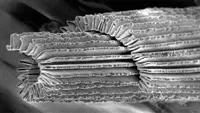 Stretchable, transparent conductors suited to a range of applications, including flexible electronics, have been developed by a research team from North Carolina State University.
Stretchable, transparent conductors suited to a range of applications, including flexible electronics, have been developed by a research team from North Carolina State University.
"There are no conductive, transparent and stretchable materials in nature, so we had to create one," said researcher Abhijeet Bagal. "Our technique, which uses geometry to stretch brittle materials, is inspired by springs that we see in everyday life. The only thing different is that we made it much smaller."
The researchers began by creating a 3D polymer template on a silicon substrate. The template, shaped like a series of identical, evenly spaced rectangles, was coated with a layer of aluminum doped zinc oxide, followed by an elastic polymer. The team then flipped the composite and removed the silicon and the template.
The result is a series of symmetrical zinc oxide ridges on an elastic substrate. Because the zinc oxide and polymer layers are clear, the structure is transparent. It can also be stretched because the ZnO ridges allow the structure to expand and contract, like the bellows of an accordion.
Fellow researcher Erinn Dandley added: "We can control the thickness of the ZnO layer and have done extensive testing with layers ranging from 30 to 70nm thick. This is important because ZnO thickness affects the structure's optical, electrical and mechanical properties."
The structure is said to be capable of being stretched repeatedly without breaking. While there is some loss of conductivity the first time it is stretched, further stretching has no effect.
The team is now experimenting with other conductive materials to determine their usefulness in creating non-transparent, elastic conductors.
Author
Graham Pitcher
Source: www.newelectronics.co.uk
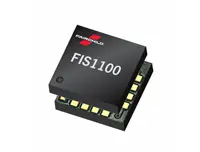 Looking to address motion control applications where accuracy at low power is important, Fairchild has launched the FIS1100, a six axis MEMS inertial measurement unit that takes advantage of its investments in MEMS and motion tracking.
Looking to address motion control applications where accuracy at low power is important, Fairchild has launched the FIS1100, a six axis MEMS inertial measurement unit that takes advantage of its investments in MEMS and motion tracking.
Per Slycke, vp of motion tracking, said: "We're excited about adding a new line of MEMS devices to our portfolio. The FIS1100 is focused on delivering a complete solution for applications that need to check motion in 3D."
According to Slycke, the part has been designed to provide high accuracy, but not at the expense of power consumption. "Motion sensors are capable of streaming a lot of data, but if you don't design the system carefully, you can burn a lot of power processing that data."
Power consumption is said to be minimised through an integral ASIC called the AttitudeEngine. This vector motion processor works with nine-axis sensor fusion algorithms to provide a system level solution with up to ten times lower processing power consumption in a range of applications.
"Many applications, including robotics and virtual reality, need a certain level of accuracy," Slycke noted. "At the same time, these apps are power sensitive."
Data is captured by a gyroscope and accelerometer – each with three axes – implemented on the same device layer. This is combined with data from an external three axis magnetometer and processed by the AttitudeEngine.
"In a traditional approach," Slycke said, "data is streamed at around 1kHz. However, the AttitudeEngine preprocesses data and streams it to the host at the rate demanded by the app."
The device layer is 60µm thick, with a high aspect ratio providing a good signal to noise ratio. "But it's harder to make," Slycke said, "because it needs deep etch."
While the gyro needs a vacuum, the accelerometer needs a damping atmosphere to prevent ringing. The two cavities are separated by caps, with a getter in the gyro chamber maintaining the vacuum.
Because it was looking for the smallest footprint possible, Fairchild has stacked the MEMS and ASIC dice, connecting them using through silicon vias. This enables the part to be supplied in a 3.3 x 3.3 x 1mm package.
"We are ambitious about our plans," Slycke concluded. "We have made big investments and the learning curve is behind us. We have a platform in place and will be responsive to market requirements."
Author
Graham Pitcher
Source: www.newelectronics.co.uk
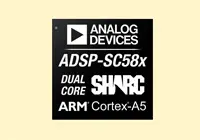 Analog Devices has extended its digital signal processing portfolio with the addition of eight parts. Five of these will feature an ARM Cortex-A5 processor core, while all will be supplied with single or dual SHARC+ cores.
Analog Devices has extended its digital signal processing portfolio with the addition of eight parts. Five of these will feature an ARM Cortex-A5 processor core, while all will be supplied with single or dual SHARC+ cores.
Colin Duggan, director of applications and marketing, noted: "DSP is becoming a function that is becoming embedded in larger devices. However, because algorithm complexity is growing, there remains the need for devices with higher real time performance."
One of the design goals for the new devices was power efficiency. "Many applications can't include a fan because of their size," Duggan noted. "That means designers are looking for devices that consume less than 2W. We have been able to get an improvement in power efficiency of up to five times."
It's the first time that Analog Devices has offered parts with multiple SHARC cores. "However, we realised we needed to upgrade the SHARC core," Duggan said. "The SHARC+ core has a deeper pipeline to enable higher clock rates and a true caching mechanism. The core is byte addressable and comes with new instructions; we think the upgrade will be good for the foreseeable future."
Manufactured on TSMC's 40nm LP process, the devices can run at clock rates of up to 450MHz. "If we move them to the HP process," Duggan added, "they will get to 800MHz."
Two 'super set' devices will be available in the short term: the ADSP-SC589, with two SHARC+ cores and the A5 processor; and ADSP-SC584, which offers the same features, but can run at a reduced clock rate.
Production for the remaining six parts is planned for the middle of 2016.
Author
Graham Pitcher
Source: www.newelectronics.co.uk
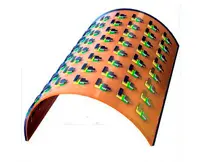 Researchers at Korean science and technology institute KAIST say they have developed a flexible phase change RAM (PRAM) featuring self assembled block copolymer silica nanostructures on a plastic substrate. The team also claims the device consumes 75% less power than a conventional PRAM.
Researchers at Korean science and technology institute KAIST say they have developed a flexible phase change RAM (PRAM) featuring self assembled block copolymer silica nanostructures on a plastic substrate. The team also claims the device consumes 75% less power than a conventional PRAM.
PRAM is a candidate for use in flexible and wearable electronics, but the operating current needs to be reduced. While one solution is to decrease cell size, scaling on flexible substrates is difficult due to the soft nature of plastics and photographic limitations.
KAIST's Professor Keon Jae Lee said: "The demonstration of low power PRAM on plastics is one of the most important issues for next generation wearable and flexible non volatile memory. Our innovative and simple methodology represents the strong potential for commercialising flexible PRAM."
The block copolymer (BCP) – a mixture of two polymer materials – allows the creation of self ordered arrays of sub 20nm features through spin coating and plasma treatments. BCP silica nanostructures lowered the contact area by localising the volume change of the phase change materials, reducing power consumption significantly. Ultra thin silicon based diodes were also integrated with phase change materials to suppress inter cell interference, demonstrating random access capability for flexible and wearable electronics.
Author
Graham Pitcher
Source: www.newelectronics.co.uk
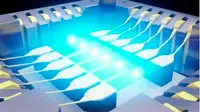 Researchers from Columbia University, along with scientists from Seoul National University (SNU) and the Korea Research Institute of Standards and Science have demonstrated an on chip visible light source which uses graphene as a filament.
Researchers from Columbia University, along with scientists from Seoul National University (SNU) and the Korea Research Institute of Standards and Science have demonstrated an on chip visible light source which uses graphene as a filament.
"We've created what is essentially the world's thinnest light bulb," said Columbia professor James Hone. "This new type of 'broadband' light emitter can be integrated into chips and will pave the way towards the atomically thin, flexible and transparent displays, and graphene based on-chip optical communications."
Until now, researchers have been unable to integrate incandescent light onto a chip because the filaments must be very hot in order to glow in the visible range and microscale metal wires cannot withstand such temperatures.
However, graphene is said to achieve high temperatures without melting the substrate or the metal electrodes. The team discovered that as graphene heats up, it becomes a poorer conductor of heat and the high temperature stays confined to a small 'hot spot'.
"The visible light from atomically thin graphene is so intense that it is visible even to the naked eye, without any additional magnification," said Young Duck Kim, a researcher at Columbia.
SNU Professor Yun Daniel Park noted the team was working with the same material used by Thomas Edison when he was developing the incandescent light bulb. "Edison originally used carbon as a filament for his light bulb and here we are going back to the same element, but using it in its pure form – graphene – and at its ultimate size limit – one atom thick."
The team has demonstrated the scalability of their technique by creating large scale of arrays of graphene light emitters. It is now characterising device performance, including how quickly they can be turned on and off, and working on ways to integrate them into flexible substrates.
Author
Graham Pitcher
Source: www.newelectronics.co.uk
 Due to the planned retirement of the previous owners of Electro Cables, the company has been acquired by Aerco.
Due to the planned retirement of the previous owners of Electro Cables, the company has been acquired by Aerco.
Managing director of Aerco, Rob Laughton, said: "Aerco is already a leading distributor of electrical components in the UK and this acquisition will strengthen our offering of cable, wire and associated accessories and widen the range of products that we offer our customers. We are totally committed to building on the good work that Electro Cable has carried out over the past three decades."
Electro Cables is a UL registered company that conforms to ISO 9000 quality management standards and has a reputation for service and quality. Aerco will integrate the activities of the business with its existing operations over the coming months.
Electro Cables managing director, Ann Hayes, said: "When Gordon (Sears, managing director) and I decided it was time to retire we sought a company that we felt would carry on the programme of work and support of our customers who we have been committed to for more than 30 years. We decided Aerco was that company and are delighted these plans have come to fruition."
Pic: Ann Hayes and Rob Laughton
Author
Tom Austin-Morgan
Source: www.newelectronics.co.uk
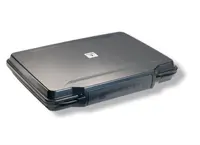 The Weightless SIG, in conjunction with the Digital Catapult, has announced the deployment of a Weightless-N Smart City network for London. Operating in the licence-exempt, sub-GHz ISM spectrum using ultra narrow band technology, Weightless-N is said to have a range of several kilometres, even in urban environments.
The Weightless SIG, in conjunction with the Digital Catapult, has announced the deployment of a Weightless-N Smart City network for London. Operating in the licence-exempt, sub-GHz ISM spectrum using ultra narrow band technology, Weightless-N is said to have a range of several kilometres, even in urban environments.
"We are delighted to be able to provide a platform to showcase Weightless-N technology, a key enabler for Smart City projects not just across the capital but around the world," Peter Karney, Digital Catapult's head of engineering, said. "We are looking forward to opening this up to our network to enable them to continue to showcase the UK's innovation in this area."
Network modelling predicts coverage encompassing well known London landmarks. Independent real world signal verification will be carried out soon to provide an accurate coverage map which will be published on the Weightless website when complete.
Weightless-N supports frequency hopping to provide interference tolerance, mobility support and security. It provides encryption and authentication using a shared secret key regime to encode transmitted information via a 128bit AES algorithm. The technology automatically routes terminal messages to the correct destination.
Author
Tom Austin-Morgan
Source: www.newelectronics.co.uk
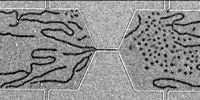 Researchers at UCLA and the US Department of Energy's Argonne National Laboratory say they have developed a method that enables magnetic skyrmion bubbles to be created at room temperature using simple equipment and common materials.
Researchers at UCLA and the US Department of Energy's Argonne National Laboratory say they have developed a method that enables magnetic skyrmion bubbles to be created at room temperature using simple equipment and common materials.
Skyrmions – small whirls in the magnetisation of magnetic materials – can have a diameter of less than 100nm. They may be important for the future of magnetic data storage and information processing if they can be moved rapidly and reliably along nanowires or other structures.
According to the researchers, skyrmions have only been created previously using expensive equipment and at temperatures as low as 5K.
"Our method is the simplest way to generate skyrmion bubbles thus far," said Argonne postdoctoral researcher Wanjun Jiang.
The team used a geometric structure to 'blow' the bubbles into shape in a very thin film. Using the facilities at Argonne's Center for Nanoscale Materials, the team built a constricted wire out of a three layered structure in which a layer of magnetic material is sandwiched between layers of tantalum and tantalum oxide.
Long stripes of magnetic domains appear in the magnetic material on one side of a tiny channel. When an electric current was applied to the metal layers, the stripes stretched through the channel and broke into skyrmions on the other side. By applying a smaller electric current through the system, the skyrmions could be moved.
"We think this method could apply to many more materials," Jiang added. "This opens many new opportunities for the future."
Author
Graham Pitcher
Source: www.newelectronics.co.uk

